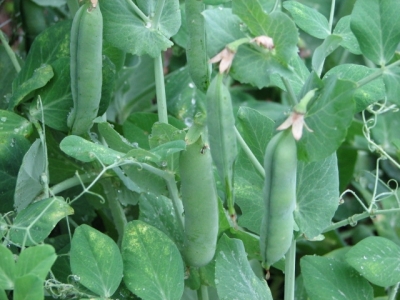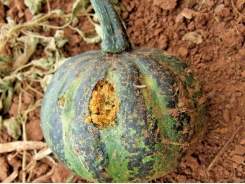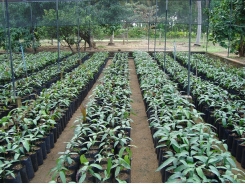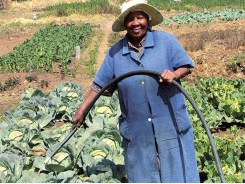Expert Tips for Growing Peas – Growing Snap Peas

Growing Peas
Garden peas are, without doubt, the most tasty and succulent of all the vegetables grown in our gardens, but in this day and age there must be millions of people whose only knowledge of the pea is the frozen one. I don’t wish to disparage the frozen or even the tinned pea, for without them there would be millions of people who would never taste the delights of anything approaching a fresh variety.
Unfortunately, except in country areas where peas are grown, picked and placed on the market stall within a matter of hours, even those offered for sale in the greengrocer’s shop bear little or no resemblance to a really succulent well-filled pod fresh from the garden. This is a great pity because a generation is growing up that despises the flat unfilled pods with rotting ends and the little wooden balls that make up what are optimistically offered as fresh garden peas. No wonder that most people, especially those eating out, prefer the frozen kind which are at least uniform and of good flavour. I think we should all have a go at growing peas, so our children can experience the freshness and taste of the good old garden pea.
Every hour that a vegetable is out of the ground or off the vine it loses flavour and certainly the commercial pea grower appreciates this. I have watched with interest the pea-gathering machines working all night and the villagers kept awake by tractors rumbling through with lights on heading for the processing factory to get the peas frozen within an hour or so of harvesting. If peas are grown in the garden only for the pleasure of eating them fresh from the vine they would be a worthwhile crop.
Quick-maturing varieties have been developed for freezing and it is advisable to check the catalogue or packet to see if a particular variety is specifically recommended for freezing. Unless you have had experience of particular varieties it may be that one which cooks well when freshly gathered loses its subtle flavour after being frozen for a month or two. Talking of flavour, even fresh peas can lose this by being overcooked in too much water.
I find many people cook vegetables badly, often leaving them on the stove whilst they do chores elsewhere. As far as peas are concerned they need the minimum amount of water and young tender peas, freshly gathered, need no water at all. The best way that I know is to put a few lettuce leaves in the bottom of the dry pan, place the peas on top with a knob of butter and a half teaspoonful of sugar. Then, with the lid tightly fitted, bring gently to the boil and cook for the minimum time.
Peas are either wrinkled or round-seeded. The round-seeded are the hardiest and in some districts can be over-wintered after an autumn sowing. Personally, I think the round-seeded varieties, in spite of their earliness, are so tasteless that it is worth waiting a few days longer and sowing the better-flavoured wrinkled types.
When growing snap peas, I prefer to make trenches unless the soil is deep. As well as benefiting the pea crop this is a way of breaking up a good depth of soil, so that ultimately the whole vegetable plot has been cultivated and organic matter worked in to the depth of two spade’s blades. Furthermore, as you dig along to make a trench, some of the lower soil (not the top soil) can be laid on the surface between the rows where it will improve enormously by exposure to sun, wind and rain. This inevitably leaves the surface of the trench some 2 inches lower than the level of the rest of the plot. This is beneficial to young seedlings which will be sheltered from cold, cutting winds.
Fungal infection can be a problem. To guard against this, puff a fungicidal powder into the packet and shake the seeds around well to coat them before sowing. Mice can often be troublesome and very destructive once they get the taste for peas. There are several proprietary powders which can be added to the fungicidal dust and shaken up in the seed packet. Another simple precaution is to water newly-sown peas and beans with a solution of Jeyes fluid. Most animals and insects find this distasteful and it disguises the natural smell of their food supply. Dry soot dusted lightly over the surface of the newly-sown rows will deter mice. This is a particularly effective treatment under cloches where it remains dry.
Rows of single seeds may be sown where exhibition plants are required, but for ordinary purposes a trench wide enough to take four single rows about 1 1/2 to 2 inches apart each way, will produce a high-yielding row. Half a pint of seed will be enough to sow a 15 to 20 feet row at this spacing.
By the way, when sowing rows of peas or beans always sow a dozen or so extra near one end so that if there are any failures or gaps in the rows these extra seedlings can be carefully transplanted to fill in the gaps. Furthermore, if, due to poort weather, bad soil conditions or any other reason you are unable to sow peas and beans as early as you would wish, damp a 5 inch pot heaped full of peat, mix the seeds into this and put them somewhere under cover out of the way of mice. Then sow the mixture after the seeds have germinated to the point where the root has started to emerge from the seed.
The distance between the rows should be as near as possible to the stated height of the variety grown. Do not worry if this is 4 or 5 feet in the case of tall varieties because the space between can be utilised for other crops which will enjoy the shade and protection of the taller peas.
Growing Snap Peas (Sugar Snap Peas)
growing snap peas The sugar snap pea or Pisum japonicum is not nearly as well known as it should be as it will provide a supply of delicious vegetables over a very long period. Unlike the garden pea it keeps on producing its edible pods and as the whole pods are eaten there is no question of a glut occurring followed by a gap in supplies. The culture is simple for growing snap peas, for it will grow in practically any soil and is not subject to so many diseases and pests as the ordinary garden pea.
The seeds can be sown in March or April in drills 6 inches wide and about 2 inches deep. The plants spread laterally in the early stages but need little in the way of staking, only requiring a few twigs or some string supports along each side. The flowers are a beautiful deep-red colour and look most attractive.
The sugar pea is cooked in its entirety in much the same way as a French bean. It can either be sliced or, if gathered very young, cooked whole. If the pods are allowed to grow too big they become rather stringy, so take heed of these expert tips for growing snap peas.
Related news
Tools

Phối trộn thức ăn chăn nuôi

Pha dung dịch thủy canh

Định mức cho tôm ăn

Phối trộn phân bón NPK

Xác định tỷ lệ tôm sống

Chuyển đổi đơn vị phân bón

Xác định công suất sục khí

Chuyển đổi đơn vị tôm

Tính diện tích nhà kính

Tính thể tích ao




 Cropped: How to Grow Shiitake Mushrooms
Cropped: How to Grow Shiitake Mushrooms  When to water your plants
When to water your plants